The M4100 megohmmeter has been produced since 1976 and is very widely used for measuring insulation resistance. This is a reliable practical perpetual megohmmeter that does not require power supplies. Many working instruments have still been preserved.
A megohmmeter can be used not only to measure insulation resistance; it can be used to check any conductor for an open circuit. For example, the integrity of cable cores or electric motor windings.
The M4100 megaohmmeter was produced in five modifications that differed in output voltage:
- M4100/1 output voltage 100 V;
- M4100/2 output voltage 250 V;
- M4100/3 output voltage 500 V;
- M4100/4 output voltage 1000 V;
- M4100/5 output voltage 2500 V.
The M4100 megohmmeter is a two-limit device, has two scales for measurements different levels isolation.
The upper “M Ω” is intended for measuring high resistance isolation. Calibrated in megohms. Most commonly used.
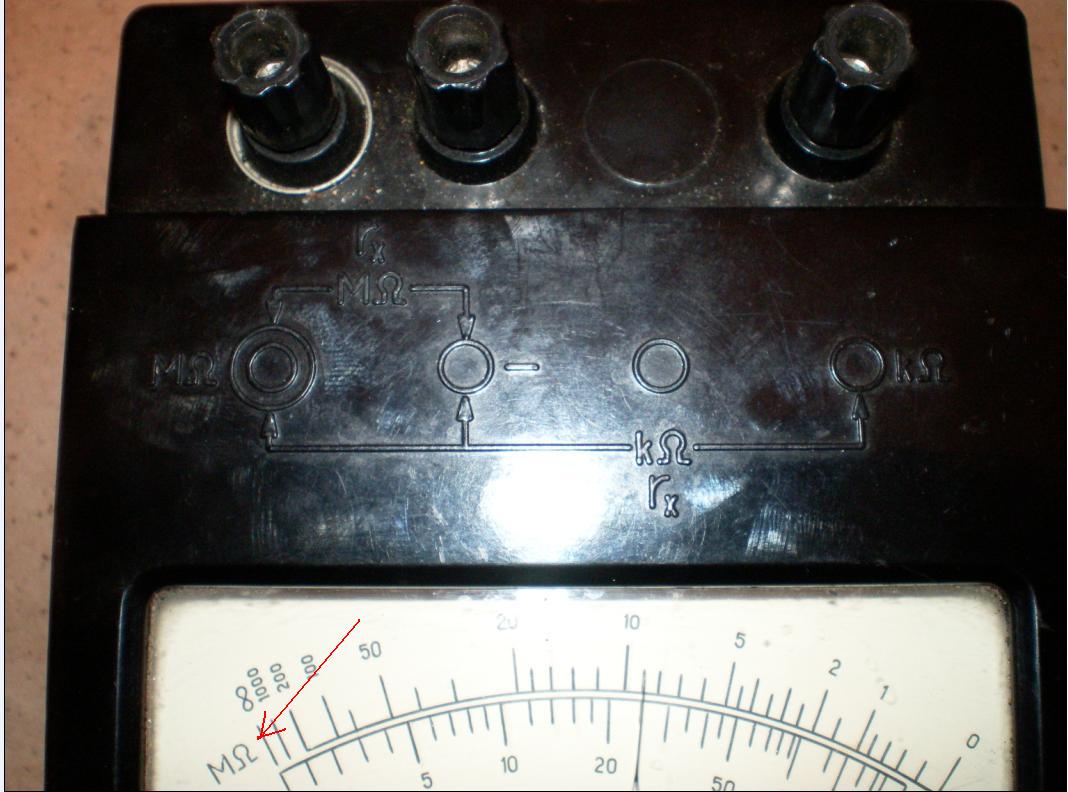
When measuring insulation at the “M Ω” limit, the conductors of the measuring probes are connected to the “EARTH” and “LINE” terminals.
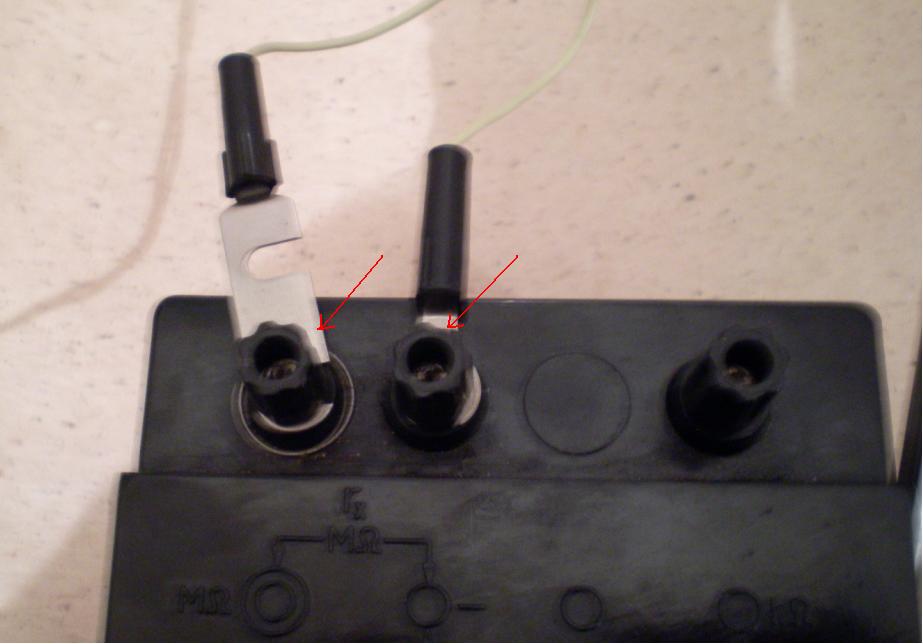
The lower scale “K Ω” has a measurement limit of 1000 kOhm, which is equal to one megohm. When measuring insulation at the “K Ω” limit, the conductor of the measuring probe, which has a jumper at its end, is connected to the “EARTH” and “LINE” terminals simultaneously. The second one is connected to the “To Ω” terminal.
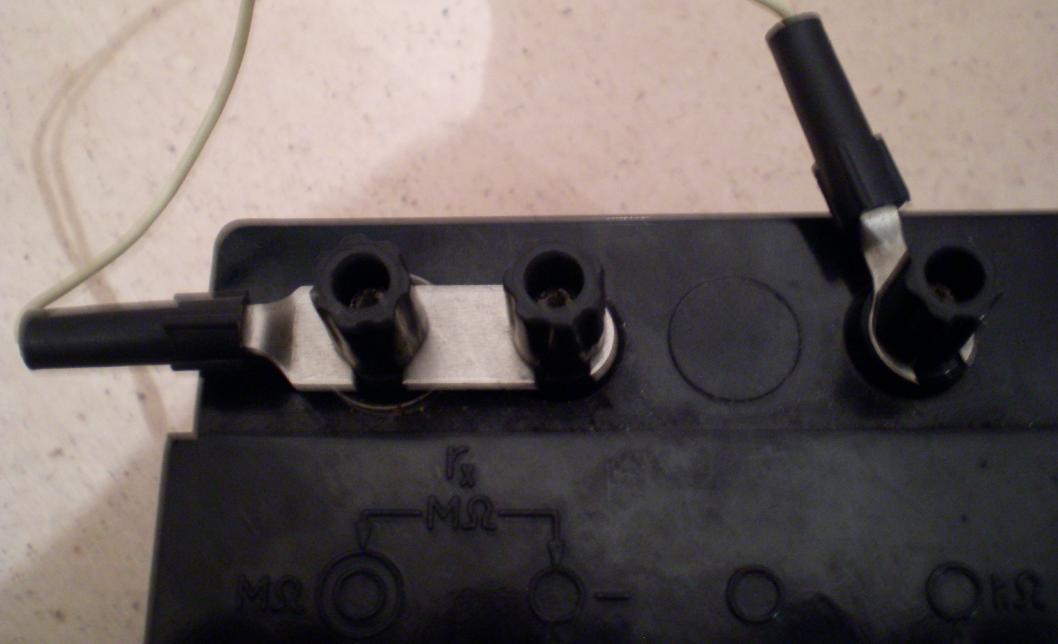
In this case, the lower scale “K Ω” is used.

Before starting measurements, we check the serviceability of the device.
We check at the limit “M Ω”. We connect the conductors of the measuring probes; they are connected to the “GROUND” and “LINE” terminals. We close the probes together.
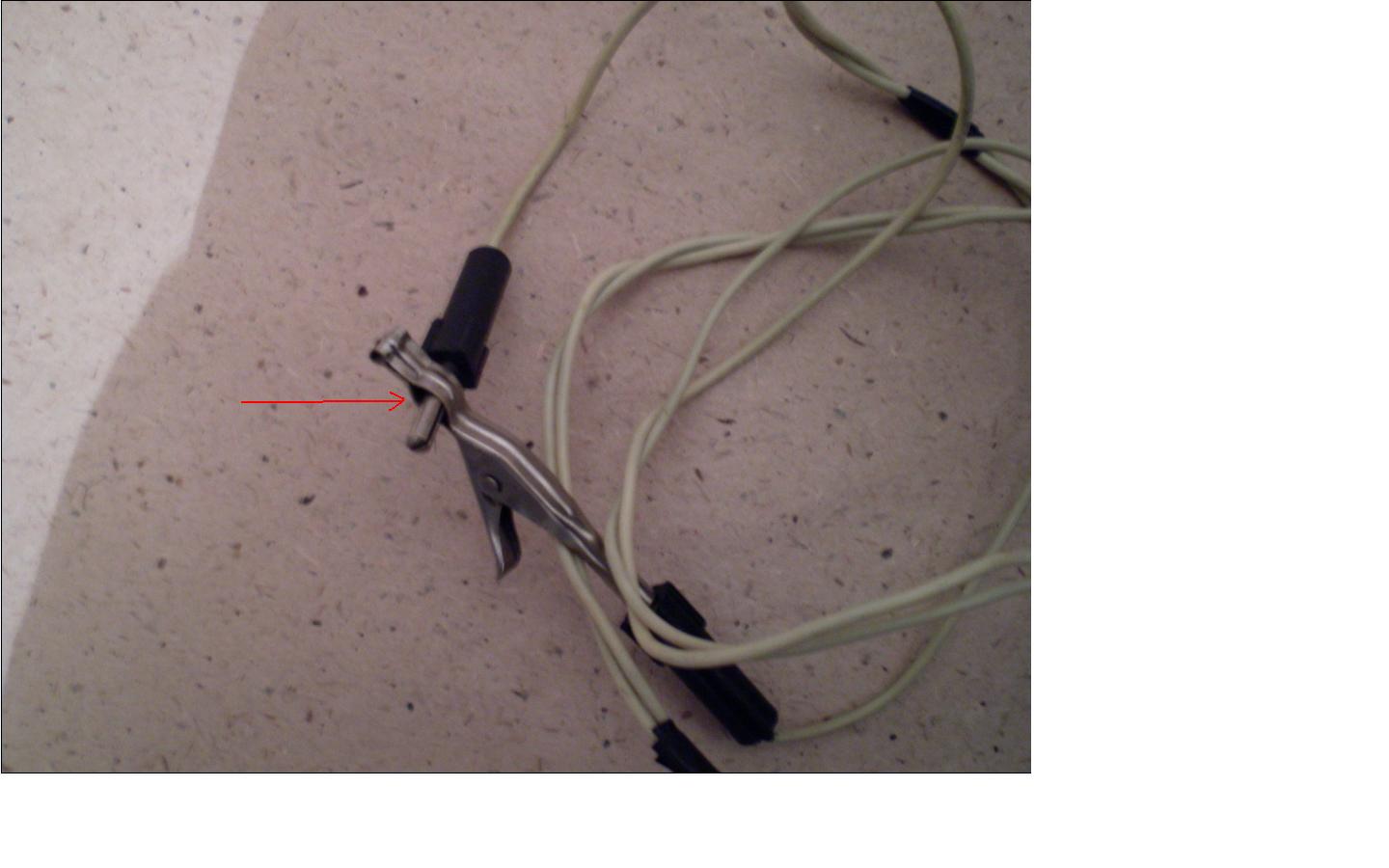
We begin to rotate the generator handle at a speed of approximately 120 rpm (the generator has a built-in regulator that ensures a constant output voltage even when the generator rotation speed is exceeded). In a working device, the needle should be set to the “0” mark on the upper “M Ω” scale.
We open the probes, rotate the handle. In a working device, the arrow should be set to the “∞” mark on the upper “M Ω” scale.
After that, we connect the probes to the resistance being measured. We rotate the handle until the needle stops moving along the scale and settles at a value corresponding to the value of the measured resistance.
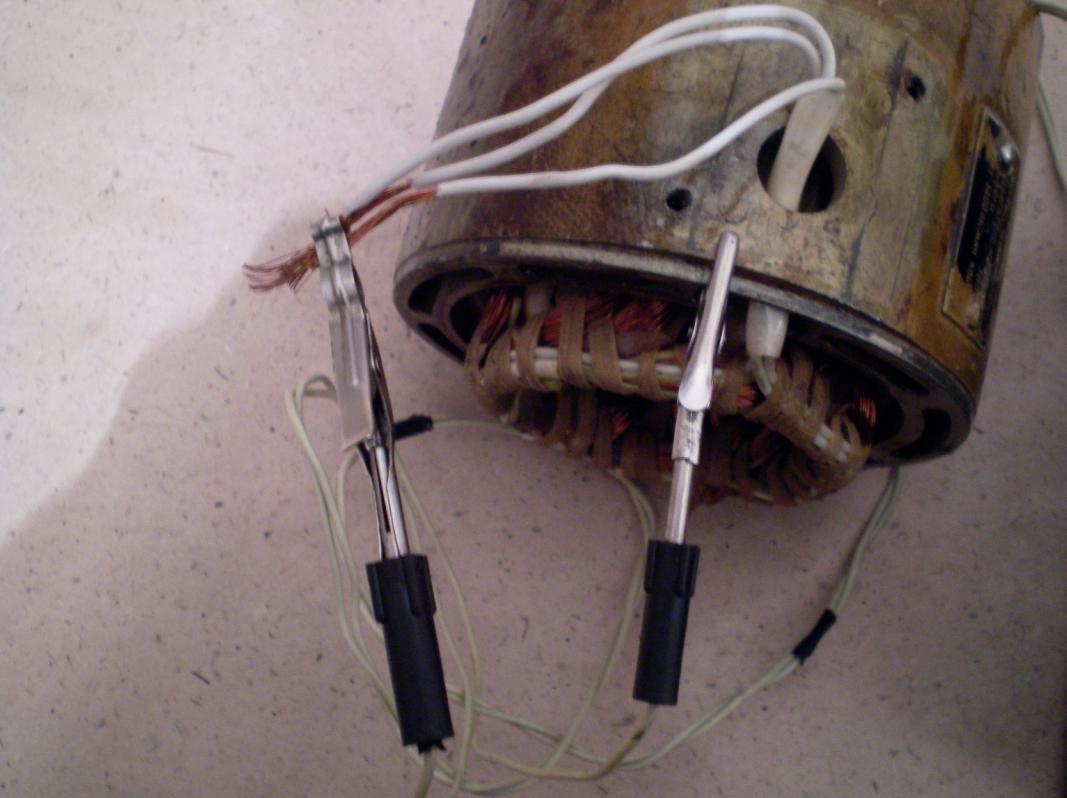
The photo shows the measurement of the insulation resistance of the stator windings of an electric motor on the housing. Why it is not recommended to do this with a simple tester can be read on this page.
Safety precautions when using a megohmmeter.
- Before connecting the probes to the resistance being measured, make sure that there is no voltage on it.
- Do not touch the probes during measurement.
- After measurement, you cannot remove the probes without making sure that there is no residual charge left on the resistance being measured. Particular care must be taken when measuring the insulation resistance between the cores of long cable lines. Closely spaced conductors accumulate charge like a capacitor.
A device for measuring insulation resistance. Modern megohmmeters allow you to measure the absorption coefficient and polarization coefficient. The absorption coefficient shows the degree of moisture in the insulation of cables, transformers, and electric motors. The polarization coefficient shows the degree of aging of the insulation of cable lines, transformers and electric motors. The operation of a megohmmeter is based on measuring the current in a circuit when a test voltage is applied to the dielectric. With digital megohmmeters, switching of measurement ranges and determination of units of measurement are carried out automatically.
The polarization coefficient is formed by determining the ability of charged particles to move under the influence of electric field in a dielectric. If the polarization coefficient is less than 1, the worn conductor insulation must be replaced; if the value is from 1 to 2, the conductor is worn, but operation is possible. If the value is more than 2, the operation of the conductor is permitted. The absorption coefficient is calculated by measuring the rate of charge of the insulation absorption capacity when a test voltage is applied. If the absorption coefficient is less than 1.3 the insulation is considered unsatisfactory, the insulation must be dried.
2. How to measure with a megohmmeter
To work with a megohmmeter you need:
a) select the test voltage. Insulation resistance is measured:
Devices and circuits with voltage up to 500 V - megohmmeter for voltage 500 V;
- devices and circuits with voltage from 500 V to 1000 V - megohmmeter for voltage 1000 V;
- devices with voltage above 1000 V - megohmmeter for voltage 2500 V.
b) Select the measurement time. Due to changes in resistance parameters, measurements must be taken for at least a minute.
The “minus”, “GUARD”, “0 V” terminal must be connected to the conductor that is grounded. It is recommended to carry out measurements twice with changing polarity of the test voltage to obtain an average result. The polarity of the test voltage is indicated on the megohmmeter sockets. The measurement results may look like this. M The minimum insulation resistance of wiring for a household network is 500 kOhm, and for industrial network and production equipment 1 MOhm.
To measure the insulation resistance of a two-core cable, it is necessary to connect the plus and minus terminals of the megohmmeter to the conductors. If the cable is single-core, then the plus and minus terminals of the megohmmeter are connected to the conductor and the screen, respectively. When measuring resistance more than 10 GOhm, it is necessary to use a shielded measuring cable; the shield of the measuring cable is connected to the appropriate socket.
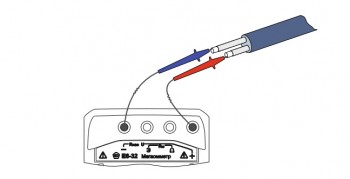
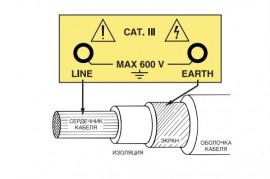
If the cable insulation is dirty and large values insulation resistance, to eliminate the influence of surface leakage currents, it is necessary to use a connection diagram with three measuring cables. It is necessary to wrap a foil ring around the insulation of one of the conductors, crimp it with a crocodile and connect the crocodile to the ground terminal of the megohmmeter.
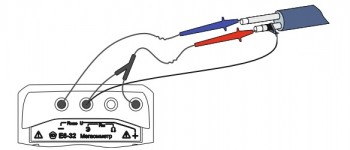
![]()
When measuring the insulation resistance of a transformer winding, to eliminate the influence of surface leakage currents, it is also necessary to use a connection diagram with three measuring cables. The ground terminal in this case is connected to the transformer core.
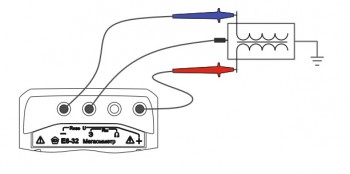
How to use a megohmmeter video
3. Insulation resistance standards
Measurements must be made at normal climatic conditions at a temperature of 25±10 °C and air humidity not more than 80%. If the cable has wires without a shield, then the insulation resistance is measured between the wire cores. If the wires have a screen in the form of braid or foil, then the insulation resistance is measured between the core and the screen.
Anyone who is familiar with electricity should be aware of the insulation resistance of wires. Its quality determines the reliability and performance of the electrical supply of the facility. According to the rules for operating electrical equipment, it is necessary to periodically check the quality of such wiring. The cable insulation resistance is important characteristic for equipment. Its measurement is carried out using a special device - a megohmmeter.
Why is it necessary to measure resistance?
Measuring resistance with a megohmmeter is necessary in order to determine possible damage. Wherein Rated voltage is selected based on the voltage of the winding itself.
The cable insulation resistance is checked to determine its suitability. As a result of violation of the integrity of the cable insulation coating, various equipment breakdowns can occur. This may also cause a fire. It is worth remembering that it makes no sense to inspect the insulation after it has already been damaged. Timely detection of differences between this parameter and the established standardized value will prevent:
- Premature equipment failure;
- short circuit of wires, which leads to a possible fire;
- electric shock to working personnel;
- various emergency situations;
What factors influence the state of insulation?
Lifetime electrical cables, especially their insulating shell, is not infinite. There are many various factors, which affect the state of insulation. The main such sources include the following:
- Sunlight.
- High voltage.
- Various temperature conditions.
- Air humidity.
- Various microdamages.
- Cable operating environment.
Object of measurement
Measuring insulation resistance using a megohmmeter can be carried out on any type of electrical equipment. The only exceptions are those parts of the devices that have an operating voltage below 60V.
How is insulation resistance measured?
Every electrician must have a device - an insulation resistance meter, with which you can monitor the condition of electrical circuits. This is exactly what a megaohmmeter is.
This device can be made in different configurations. Also, it must have the appropriate certificate and be in good working order. The accuracy of the megohmmeter measurement depends on its annual inspection by the State Standards Authority. These devices are:
- WITH manual drive, when there is a built-in generator inside the megohmmeter.
- Electronic type. This device is powered by a battery.
Also, megohmmeters are classified according to voltage limits: 500, 1000, 2500 and 5000 Volts. In cases where the wire cross-section does not exceed 16 mm², then use this device at 1 kV, and if it is more or armored cables are checked, then use a 2.5 kV megohmmeter.
Basic rules for measurements
The first measurements are carried out immediately after the cable is manufactured, at the manufacturing plant. The second inspection point must already be on site before work begins. installation work, and also before starting the electrical supply system. This check will determine whether the cable insulation was damaged during installation work.
It is mandatory to measure the insulation resistance before and after repairing the power line.
During work electrical networks It is imperative to carry out these measurements periodically. This must be taken with the utmost seriousness. After all, timely detection of a fault in the cable insulation layer can prevent the occurrence of various emergency situations.
Who should take the measurements?
To perform this type of work, appropriate access is required. In this regard, measurements of insulation resistance are carried out by special teams, which include only qualified employees. All of them must undergo special training and have the appropriate electrical safety rating.
Method of measurement
The method for measuring insulation resistance using a megohmmeter consists of the following steps:
- First of all, you need to make sure that there is no voltage in the network under study.
- If you do not know the resistance of a section of the circuit, then before starting the measurement, you need to set its maximum value on the device.
- It is necessary to disconnect or short-circuit all elements of the electrical circuit that have a low insulation limit. This must be done with capacitors, as well as semiconductor devices.
- Then the circuit under test is grounded.
- Within 1 minute, it is necessary to measure the insulation resistance with a megohmmeter, rotating the handle of the generator of the inductor device or pressing the “high voltage” button on those measuring instruments that have mains power. After this, take readings from the device scale.
- After completing all measurements, you must remove electric charge from the chain. This can be done by grounding it.
IN electrical circuits Insulation resistance plays a vital role. This is especially important for high-voltage installations. Industrial voltage 230/400V (220/380V according to outdated standards) can without a doubt be considered high from a safety point of view. Therefore, checking the insulation resistance of electrical installations is always performed:
- when putting an electrical installation into operation;
- after completion of repair work;
- periodically, for prevention.
For such tests, a special device is used - a megohmmeter. As its name suggests, it measures resistance in millions of ohms. Therefore, work with a megohmmeter is carried out using high voltage. Otherwise, it is impossible to obtain an electric field close to real conditions, and the weak leakage current cannot be measured with existing instruments.
You need to know how to use a megohmmeter; this device requires approval group 3 and higher for electrical safety. At the output terminals of the device at the time of measurements there is a high voltage of the order of 500-2500V. When measuring the insulation resistance of cable and other lines with a megohmmeter, or when measuring the absorption coefficient, a significant charge accumulates in the conductor, since the capacitance of long conductors can reach several mF.
The insulating material has a dielectric constant, which increases the capacitance. Carelessly touching such a conductor AFTER checking the insulation can be deadly! Since not everyone, even electricians, are amateurs and experts in physics, literal knowledge of the instructions for working with a megohmmeter is mandatory and is checked, regardless of education and qualifications, for all workers receiving permission to carry out measurements.
The rules determine how to measure insulation resistance in each specific case. Measuring insulation resistance with a megohmmeter is the action for which it is intended. For example, measuring the insulation resistance of an electric motor or the absorption coefficient. On the other hand, it is preferable to measure the DC winding resistance with another device (ohmmeter, or better yet, a bridge direct current), although the megohmmeter can operate in the low resistance range, the results will be rough. You can only test the conductor with a megaohmmeter - in this case it will show zero resistance or very close to it.
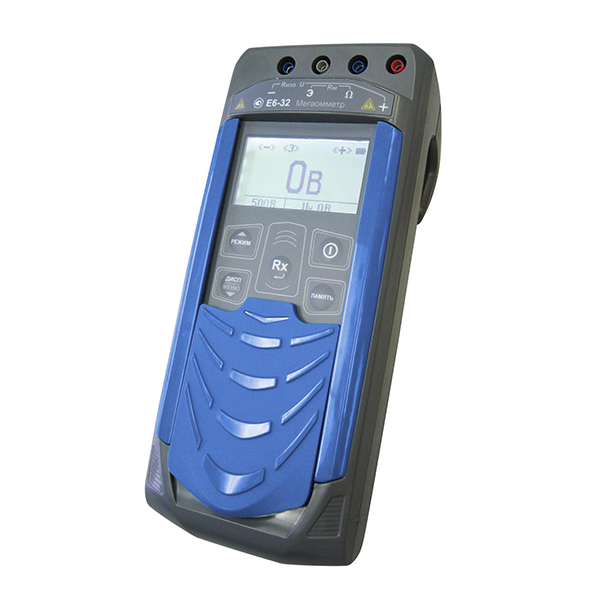
Megaohmmeter device
Modern megohmmeters have a design that differs significantly from the devices of early samples, however, the principle of their operation remains the same: feeding into the measuring circuit increased voltage and measurement of small currents that flow in this circuit. Instead of a dynamo and a pointer galvanometer, placed in a massive carbolite case, modern device contains a pulse high-voltage generator, a rectifier, a digital microammeter, a control controller and a display for displaying measurement results.
For power supply, alkaline or lithium-ion cells are used, with a total voltage of 9-12 V. These devices are now widespread. Devices of obsolete types due to physical aging may simply not pass verification and will not receive a certificate. Without this document, measurements are considered invalid.
Measurement modes and standards
For household wiring and electrical installations, wire insulation resistance tests are carried out with a voltage of 500 V, and for industrial ones with a voltage of 1-2.5 kV. Minimum insulation resistance household networks and installations should be at least 0.5 MOhm, and industrial ones should be at least 1.0 MOhm, hence the difference in voltages required for a megohmmeter.
Cable and wiring insulation
The cable insulation resistance is measured between its conductors and between individual conductors and the ground or screen (casing), if any. If the cable has a screen or braid, then it is connected to the “E” terminal of the megohmmeter to compensate for leakage currents when measuring the insulation between conductors. If the device under test is a cabinet, then the housing is connected to terminal “E”. The cable screen, braid, casing or housing of the electrical installation is always grounded. To connect the device, use only insulated wire. It is prohibited to touch it with your hands during measurements. After testing, the conductor under test is grounded by the conductor using an insulating rod.
Insulation of electric motors and transformers
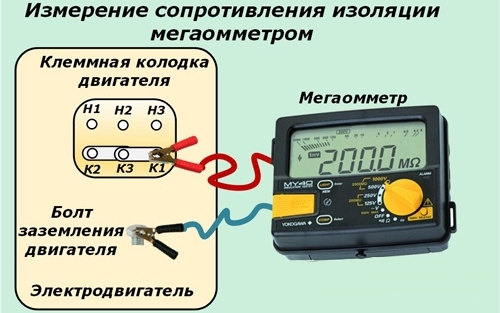 Since both the electric motor and the transformer are considered electric machines, there are many similarities in how the insulation resistance of a transformer and a motor are measured. An electric motor (transformer) is tested for the resistance of inter-winding insulation - insulation between phases, as well as for the insulation resistance between each of the windings and the housing. If the windings are internally connected in a star or delta manner, then only the resistance between the windings and the housing is tested. In electric motors, bearing insulation tests can additionally be carried out.
Since both the electric motor and the transformer are considered electric machines, there are many similarities in how the insulation resistance of a transformer and a motor are measured. An electric motor (transformer) is tested for the resistance of inter-winding insulation - insulation between phases, as well as for the insulation resistance between each of the windings and the housing. If the windings are internally connected in a star or delta manner, then only the resistance between the windings and the housing is tested. In electric motors, bearing insulation tests can additionally be carried out.
Safety in measurements
Measurements with a megohmmeter always indicate charges to insulated conductors, and how better quality insulation, the longer the charge lasts. For safety reasons, be sure to remove these charges using wires with insulated handles. The connection points of the wires from the device are short-circuited and each of the conductors is additionally shorted to ground. There is only one goal - to remove all residual charges for the safety of people.
Measuring the insulation of electrical installations is easier than measuring lines and networks due to the concentration and proximity to personnel. Below is step by step order actions when measuring on lines.
Line insulation measurement
When preparing to measure cable lines, it is necessary to remove unauthorized people and animals from all places where access to conductors is possible. Post warning signs and have guards on duty.
The line must be completely de-energized and disconnected from all loads: automatic machines, RCDs, inserts, all plugs must be removed from the sockets, etc. otherwise, it will be impossible to measure the cable insulation resistance, and some devices under load may be damaged.
![]()
Having selected a circuit for measurement, first short-circuit its conductors to the ground or case for a while (if it is already known that the ground resistance of the case is normal). This is required to remove residual charges and measure accuracy.
Measuring device(megaohmmeter) is reliably connected to selected points between which the insulation is tested. Screens, braids and housings are connected to terminal “E”. Insulation material The megohmmeter wires must be intact along their entire length.
Press the “Start” button and voltage is applied to the line. After 15 seconds, the first insulation resistance reading is automatically taken. After another 45, the second one is done. The device calculates the absorption coefficient. This is the ratio of the second count to the first. The absorption coefficient gives a measure of the moisture content of the insulation.
The polarization coefficient is measured within 600 seconds. This is the third countdown. The ratio of the third sample to the second is the polarization coefficient. This is a measure of the quality of the insulation.
The measurement process carried out is stored in the megohmmeter and all data can be displayed on the display or stored in memory (this depends on the brand of the device).
The megohmmeter is turned off using isolated rods and a special conductor discharge linear conductors along the measurement circuit and to the ground. The steps are repeated for all necessary circuits.
Evaluation of results
For small objects, the insulation resistance is considered to be the data obtained after 15 seconds. The screen is not used because the capacitance is small (for example, an electric motor that is not connected to a long cable.) The absorption coefficient is also not measured. In all other cases, and for cable lines Insulation resistance is considered to be the data obtained after 60 seconds. The polarization index is measured during comprehensive testing of electrical installations.
Readers of this article will most likely have to measure small objects where insulation measurement is carried out using a simplified version. Megaohmmeters make it possible to select the required measurement modes in their menu, since all measuring procedures are more or less standardized. Despite this, we must not forget for a second about observing the safety measures listed in the article!
Hello, readers of the Electrician's Notes blog.
2. We install test grounding with special clamps“crocodile” type on the cable cores from the side where we will measure the insulation resistance.
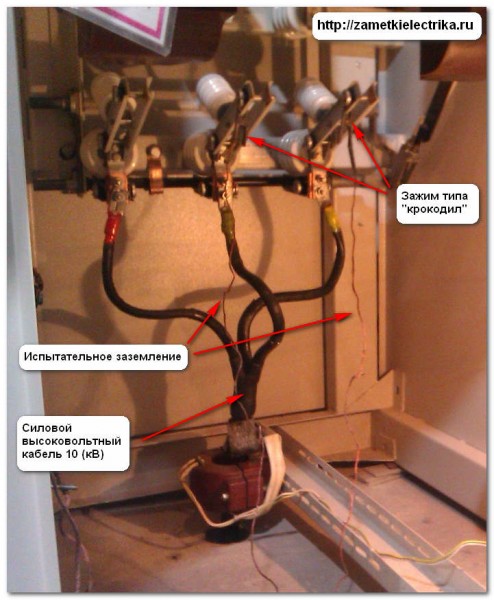
3. On the other side of the cable, leave the cores free and separate them at a sufficient distance from each other.
4. We hang prohibition and warning posters. On the other hand, I recommend leaving a person who will observe that when measuring the insulation resistance with a megohmmeter, no one comes under the test voltage.
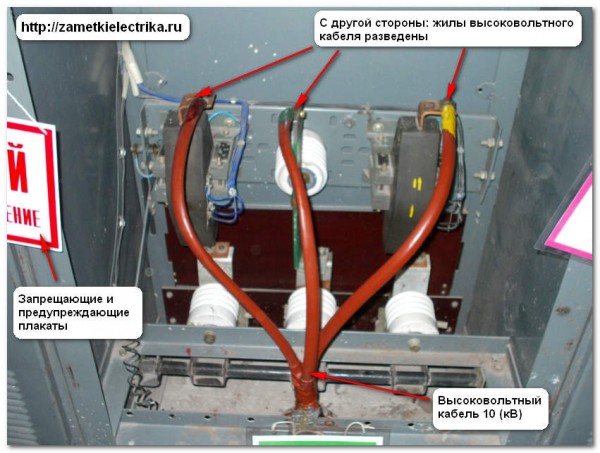
5. High voltage insulation resistance measurement power cable We carry out a megaohmmeter at 2500 (V) on each core one by one for 1 minute.
For example, we measure the insulation resistance on the conductor of phase “C”. At the same time, we install test grounding on the conductors of phases “B” and “A”. We connect one end of the megohmmeter to a grounding device, or, more simply, to “ground”. The second end goes to the core of phase “C”.
In an example it looks like this:

6. We write down the readings obtained during the measurement of the insulation resistance of the high-voltage cable in a notebook.
Methodology for measuring insulation resistance of low-voltage power cables
The method for measuring the insulation resistance of low-voltage power cables differs from the previous one (described above), but only slightly.
Likewise:
1. Check that there is no voltage on the cable using devices designed for work in electrical installations.
2. On the other side of the cable, leave the cores free and separate them at a sufficient distance from each other.
3. We hang prohibition and warning posters. On the other hand, I recommend leaving a person who will observe that when measuring the insulation resistance with a megohmmeter, no one comes under the test voltage.
4. We measure the insulation resistance of a low-voltage power cable with a 2500 (V) megohmmeter for 1 minute:
- between phase conductors (A-B, B-C, A-C)
- between phase conductors and zero (A-N, B-N, C-N)
- between phase conductors and ground (A-PE, B-PE, C-PE), if the cable is five-core
- between zero and ground (N-PE), having previously disconnected zero from the zero bus
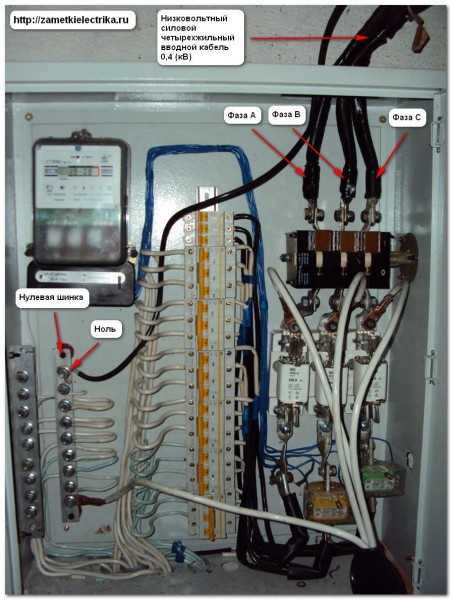
5. We write down the readings obtained during the measurement of the insulation resistance of the low-voltage cable in a notebook.
Methodology for measuring insulation resistance of control cables
Well, now we have reached the point of measuring the insulation resistance of control cables.
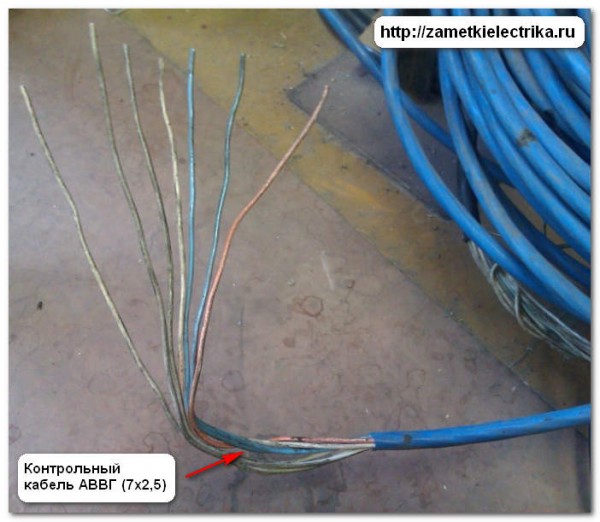
The peculiarity of their measurement is that the cable cores can not be disconnected from the circuit and can be measured together with the installed one.
Measuring the insulation resistance of the control cable is performed in the same way.
1. We check that there is no voltage on the cable using protective equipment designed for work in electrical installations.
2. We measure the insulation resistance of the control cable with a 500-2500 (V) megohmmeter as follows.
We connect one terminal of the megohmmeter to the core being tested. We connect the remaining cores of the control cable to each other and to the ground. We connect the second terminal of the megohmmeter either to ground or to any other non-tested conductor.
For clarity, see the photo:

Within 1 minute we measure the core being tested. Next, we return the measured core to the rest of the cable cores and proceed to measuring the next core.
So every vein.
3. We write down all the obtained readings of the insulation resistance of the control cable in a notebook.
Cable insulation resistance measurement protocol
P.S. This concludes the article. If you have any questions, feel free to ask them. And also don’t forget to subscribe to new articles from my website.
